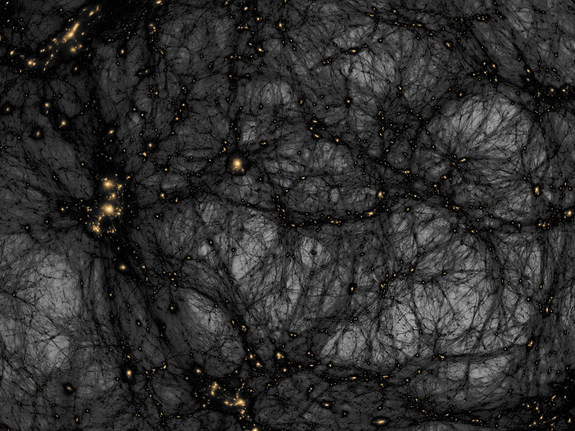
The U.S. particle physics community should build atom smashers and giant telescopes to further discoveries related to the Higgs boson particle, learn more about the mass of ghostly, chargeless particles known as neutrinos, search for dark matter and dark energy and hunt for new particles, according to a new report.
The 10-year strategic plan, which was presented to the High Energy Physics Advisory Panel that advises the Department of Energy and the National Science Foundation, has also identified the most promising projects to further these goals.
New frontiers
The discovery of the Higgs boson particle, thought to explain how other particles get their mass, in recent years answered a long-standing question but raised others, such as how the Higgs interacts with dark matter and neutrinos (elementary particles), and whether it is made of up of even smaller particles. [Beyond Higgs: 5 Elusive Particles That May Lurk in the Universe]
To address those questions, the United States should fund a proposed facility, dubbed the International Linear Collider, which could offer even greater sensitivity than the Large Hadron Collider in Switzerland where the Higgs boson was discovered, the report recommends. That project would smash together electrons and their antiparticles, called positrons, after accelerating over distances of up to 31 miles (50 kilometers). (Several countries have proposed that they host the ILC, but Japan is currently the leading contender.)
Facilities should be built to probe the mass composition and behavior of neutrinos, the report recommends.
Because they rarely interact with other matter, neutrinos are difficult to detect. One of the best ways to study how these ghost particles get their mass and interact with each other is a proposed long baseline neutrino experiment, which would send neutrinos barreling through 800 miles (1,290 km) of the Earth's mantle to a massive detector made of liquid argon, according to the panel.
Sign up for the Live Science daily newsletter now
Get the world’s most fascinating discoveries delivered straight to your inbox.
Dark matter and energy
Physicists should also focus their efforts on dark matter, a mysterious form of matter that makes up more than 80 percent of the matter in the universe, yet emits no light or energy, the report found.
Direct detection experiments in Earth-bound particle accelerators and massive telescopes could help unmask dark matter.
Sky surveys, such as the Large Synoptic Survey Telescope (LSST), can also reveal more about dark matter's mysterious properties by characterizing the shapes of galaxies. If funding allows, the report also recommends investing in the dark energy spectroscopic instrument (DESI), a telescope that aims to measure light spectra from nearby quasars and galaxies, reconstructing a map of nearly one-third of the universe.
Those same telescopes could also peer back in time about 10 billion years to help physicists understand dark energy, energy that may permeate the universe and caused it to accelerate so rapidly in the first fraction of a second after the Big Bang, the report said.
Follow Tia Ghose on Twitter and Google+. Follow Live Science @livescience, Facebook & Google+. Original article on Live Science.

Tia is the managing editor and was previously a senior writer for Live Science. Her work has appeared in Scientific American, Wired.com and other outlets. She holds a master's degree in bioengineering from the University of Washington, a graduate certificate in science writing from UC Santa Cruz and a bachelor's degree in mechanical engineering from the University of Texas at Austin. Tia was part of a team at the Milwaukee Journal Sentinel that published the Empty Cradles series on preterm births, which won multiple awards, including the 2012 Casey Medal for Meritorious Journalism.









